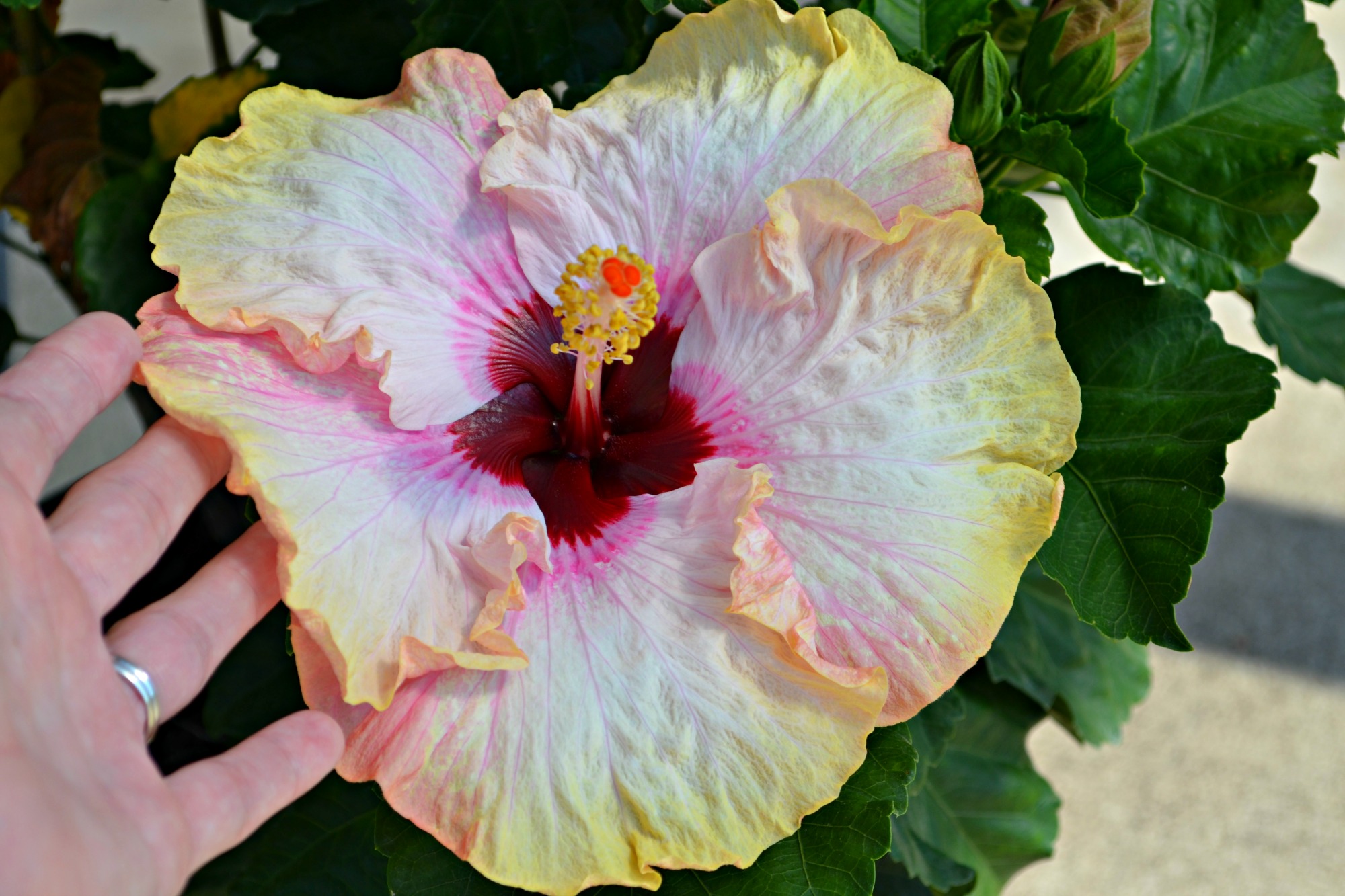Landscape Plants with a Tropical Feel
Using plants that add a tropical flare to the landscape can really perk up a garden and make time spent outdoors more enjoyable.

Bold floral colors and foliar textures introduce unique dynamics around pools and patios. Many of these plants are cold hardy in the Piedmont of North Carolina. These tropical plants will make the landscape pop in summer months.
Many people do not realize that certain banana species are cold hardy in North Carolina. In our display garden at Fairview, we have many banana plants (Musa basjoo) that have been in the landscape for twelve years. They emerge from winter dormancy in May and by the end of the summer can reach heights of fifteen to twenty feet. These plants are old enough to have actually produced flowers and fruits over the last few years.

Our season is not long enough for the fruits to become as large as what we see in the grocery store, but they still add an unusual twist to the landscape. After the first frost in the fall, we cut the plants down to three feet and surround the trunks with leaves and pine straw for added winter protection. The leaves of the banana are long (up to five feet) and wave in the breeze much like they do in the Caribbean. The unique flowers resemble purple colored footballs hanging off of the main stem. Bananas are plants that once planted in the landscape will have neighbors guessing.
Elephant ears are also great plants for adding tropical interest to the landscape. Many of the elephant ears are cold hardy, while some should be considered annual. Members of the Colocasia genus are generally considered cold hardy while the Alocasia genus is considered annual.

There is a wide range of sizes and colors to consider with the elephant ears. They range from twelve inches in height to several feet. Solid green leaves are standard, but many variations are available. One of the most cold hardy cultivars is Colocasia ‘Illustris’. This is a great smaller selection growing to heights of twelve to eighteen inches with black colored foliage. The interesting thing about the foliage is the chartreuse colored veins that contrast perfectly with the dark foliage. ‘Illustris’ tends to colonize and fill in empty space in the garden. The delicate texture of ferns contrasts perfectly with the coarse texture of elephant ears.

There are also several species of palms that can be grown here in the piedmont. Windmill palm (Trachycarpus fortunei) has been the most popular in recent years. Windmill palms can reach heights of twenty or more feet. There is a Windmill Palm in Pullen Park that stands over thirty feet tall. Sabal palm (Sabal minor) is another cold hardy palm that is native to the eastern portion of the state. Sabal palm is a much smaller plant than windmill palm, reaching heights of five feet.
 This is more of a mounding type of palm that appears to have no trunk. Needle palm (Rhapidophyllum hystrix) is a plant that closely resembles sabal palm in form and texture. It is easy to see where needle palm gets its name. This plant produces extremely sharp “needles” around the base that can reach lengths of ten inches. This is certainly not a plant that one would want to fall into.
This is more of a mounding type of palm that appears to have no trunk. Needle palm (Rhapidophyllum hystrix) is a plant that closely resembles sabal palm in form and texture. It is easy to see where needle palm gets its name. This plant produces extremely sharp “needles” around the base that can reach lengths of ten inches. This is certainly not a plant that one would want to fall into.
Nothing screams tropical paradise as much as hibiscus. There are many different types of hibiscus available for use in the garden. The rose of sharon shrub form (Hibiscus syriacus) has been a popular plant in southern gardens for years. These deciduous shrubs can attain heights of six to eight feet, and flower during the summer months with white, blue, red, purple, or pink flowers. Their perennial counterpart (Hibiscus sp.) will go dormant in the fall only to reappear the next summer with huge ten to twelve inch diameter flowers, much larger than the four inch flowers of rose of sharon.

There are many different species and hybrids of the perennial forms available. Some of these species are native and can tolerate boggy soils, while some prefer drier areas. The tropical hibiscus (Hibiscus sp.) is a plant that is available in many different colors, and has dark glossy green leaves. This hibiscus will flower all summer but needs to be taken out of the ground and brought inside for the winter months.
If you have a trellis or arbor that needs a tropical punch, consider using mandevilla (Mandevilla sp.). Mandevilla is a fast growing annual vine that produces a multitude of simple large pink flowers. Over the course of summer, mandevilla can cover large areas with flowers and lustrous dark green leaves. Mandevilla is an annual and will need to be replaced on a yearly basis. This vine is well worth the effort to replace it every year.

Bougainvillea is another tropical plant that can be trained on a trellis or used in pots or hanging baskets. Bougainvillea flowers in many different vivid colors. Much like mandevilla, bougainvillea is an annual in North Carolina and will need to be replaced annually.

There are many other plants available to add a tropical theme to the landscape. Perennials like ginger lily (Hedychium) and bear’s breeches (Acanthus) add interesting flowers and foliage to the landscape. Annuals such as angel trumpet and shrimp plant introduce large and borderline bizarre floral forms as well. Any of these plants will help create a tropical paradise for your family to enjoy!
Happy Gardening!




